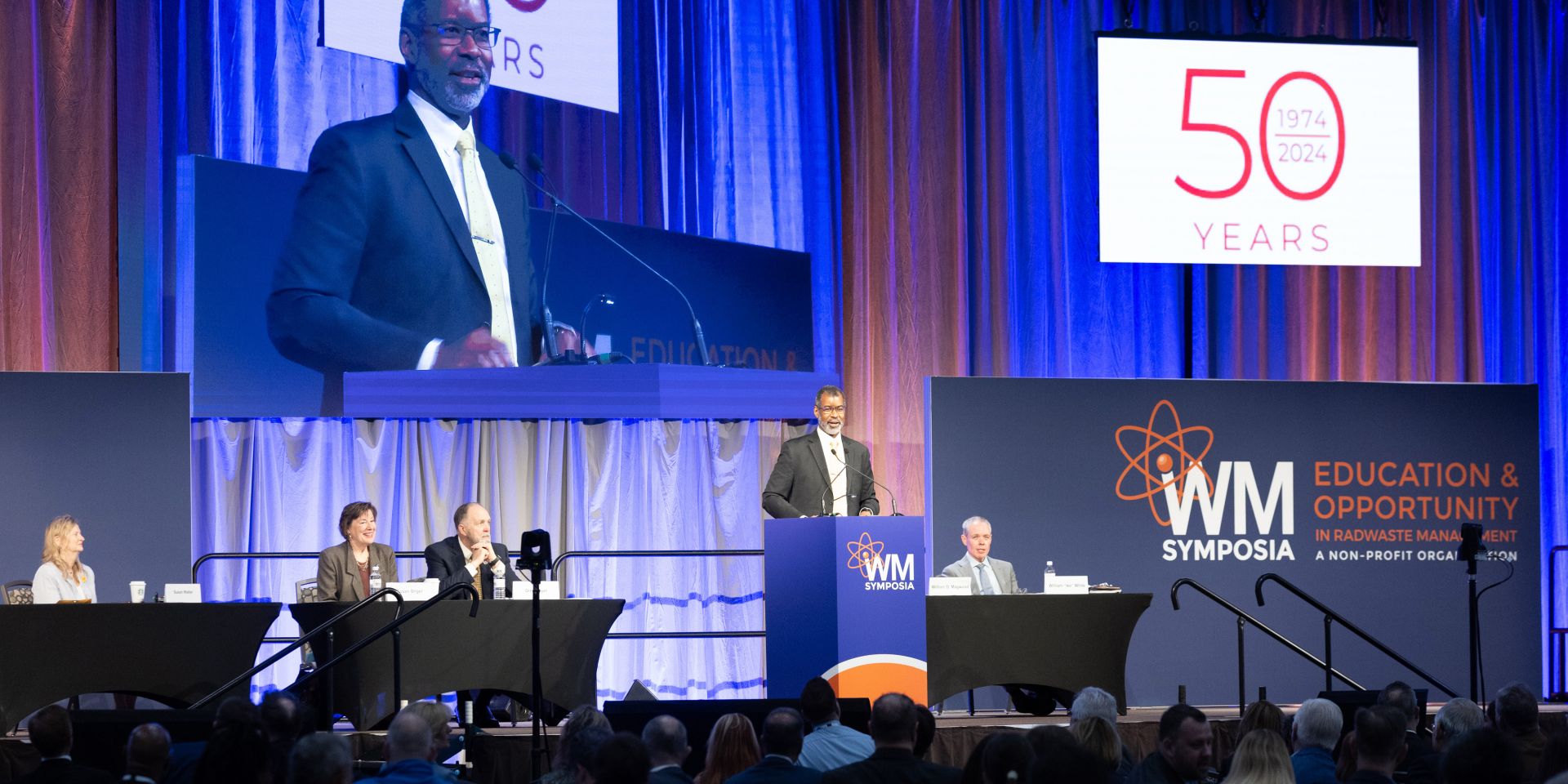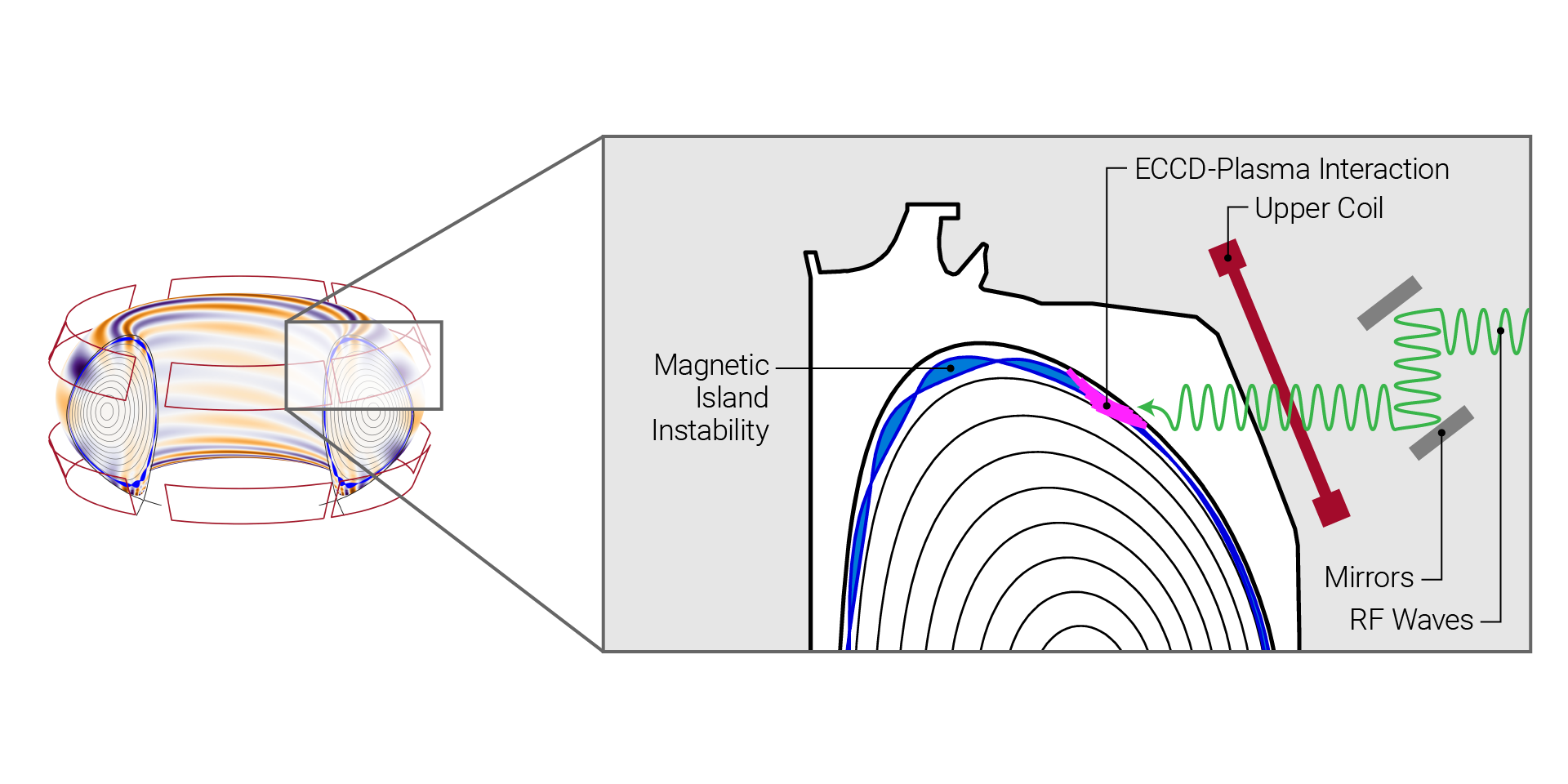NRC names four MSI recipients of scholarships and fellowships

Four minority-serving institutions (MSIs) have been named by the Nuclear Regulatory Commission as recipients of scholarship and fellowship grants worth a total value of $1.78 million.
Published since 1959, Nuclear News is recognized worldwide as the flagship trade publication for the nuclear community. News reports cover plant operations, maintenance and security; policy and legislation; international developments; waste management and fuel; and business and contract award news.

A message from Goodway Technologies
Optimizing Maintenance Strategies in Power Generation: Embracing Predictive and Preventive Approaches

Four minority-serving institutions (MSIs) have been named by the Nuclear Regulatory Commission as recipients of scholarship and fellowship grants worth a total value of $1.78 million.

On May 13, President Biden signed the Prohibiting Russian Uranium Imports Act, unlocking the $2.72 billion that Congress conditionally appropriated in March to increase production of low-enriched uranium (LEU) and high-assay low-enriched uranium (HALEU).

Korsnick
Nuclear Energy Institute president and CEO Maria Korsnick delivered her State of the Nuclear Energy Industry address at NEI’s 2024 Nuclear Energy Policy Forum yesterday. The forum this year is taking place May 14–16 in Washington, D.C., and serves to gather industry leaders, executives, and experts for pivotal conversations about the federal and state nuclear policy landscapes.
Korsnick updated attendees on policy priorities of the industry and gave her perspective on nuclear energy’s present and future.
She centered her talk on national and global priorities to secure a clean energy future at the same time as achieving energy independence and security—all while meeting a massive increase in demand for power. “Nuclear energy remains the key” to addressing these priorities, she said.

Kristin Hirsch
Radioactive materials are used in medical, research, and commercial facilities to treat cancer, irradiate blood, sterilize food and equipment, and build economies worldwide. In the wrong hands, however, even a small amount of radioactive material can do a great deal of harm. A radiological dispersal device (RDD), otherwise known as a “dirty bomb,” is believed to be an attractive weapon for terrorist groups due to its scale of impact—panic, physical contamination, costly remediation, and denial of access to facilities and locations.
The Department of Energy’s National Nuclear Security Administration Office of Radiological Security (ORS) enhances global security by preventing high-activity radioactive materials from being used in acts of terrorism. ORS implements its mission through three strategies: protecting radioactive sources used for vital medical, research, and commercial purposes by securing facilities that utilize radioactive isotopes; removing and disposing of disused sources; and encouraging the adoption and development of nonradioisotopic alternative technologies such as X-ray and electron beam irradiators.

This year marked the 50th anniversary of Waste Management Symposia’s Waste Management Conference, held March 10–14 in Phoenix, Ariz. The event has grown significantly since the first Waste Management Conference in 1974, which attracted about 200 attendees. This year’s conference saw a record attendance of around 3,300 people from more than 20 different countries and boasted 235 technical sessions and 89 exhibitors.
A bill being considered in the U.S. Senate seeks to remove the requirement for the Nuclear Regulatory Commission to hold a public hearing for every nuclear reactor application.
Current law requires public hearings to be held by the NRC toward the end the reactor license application process, in addition to the statutorily required environmental and safety reviews that provide public engagement opportunities for stakeholders and citizens.

After completing its business combination with AltC Acquisition Corp, Oklo Inc. began trading on the New York Stock Exchange under the ticker symbol OKLO this past Friday, May 10.
The company is aiming to provide clean, reliable, affordable nuclear energy to customers across the artificial intelligence, data center, energy, defense, and industrial markets. Sam Altman, chairman of Oklo since 2015 and former chief executive of AltC, called the first day on the NYSE a milestone for the entire team.

Shikha Prasad
High-assay low-enriched uranium (HALEU) has emerged as a popular fuel choice for advanced small modular reactors due to its long power production periods before refueling. It is currently being pursued by TerraPower, X-energy, BWX Technologies, Kairos, Oklo, and other reactor companies. HALEU has a uranium-235 enrichment ranging from 5 percent to 20 percent, whereas traditional LWRs use low-enriched uranium fuel enriched up to 5 percent.
HALEU will provide power for longer durations, compared with traditional LWRs. But could it also provide an opportunity for more rapid proliferation, as is speculated in a 2023 National Academy of Sciences report on advanced nuclear reactors (nap.nationalacademies.org/catalog/26630/)?
If a nuclear proliferator conspires to divert fresh nuclear fuel for weapons production when it has not been used in a reactor, the effort required in separative work units (SWUs) to enrich U-235 from 5 percent to 90 percent and that required to enrich from 20 percent to 90 percent are both very small, compared with the effort required to enrich U-235 from its natural abundance to the initial 5 percent.

The DIII-D National Fusion Facility is starting up after an eight-month experimental hiatus, equipped with new and improved plasma control and diagnostic systems. The upgrades will help researchers from around the nation and the world resolve key physics questions to bridge the gap between current magnetic confinement fusion research and the first fusion power pilot plants. General Atomics, which operates DIII-D for the Department of Energy, announced the completion of upgrades on May 8.

GE Hitachi Nuclear Energy (GEH)—the nuclear business unit of Massachusetts-based GE Vernova in partnership with Japan’s Hitachi—has announced that it is forming a group of qualified supply chain companies to advance the manufacture, commercialization, and international deployment of its BWRX-300 small modular reactor. The company stated that it is forming the group to help ensure “a reliable, cost-effective and innovative” process for getting its SMR commercialized and deployed around the world.

Baseload nuclear generation doesn’t get the respect it deserves, if you ask nuclear operators. But the hyperscale data centers that process our digital lives—like the one right next to the Susquehanna plant in northeastern Pennsylvania—are pushing electricity demand up. Clean, reliable capacity now looks a lot more valuable.

When the U.S. Fusion Energy Outreach Team declared the second week of May as Fusion Energy Week, they were recognizing the May 10 birthday of Cecilia Payne-Gaposchkin—the British-born American astronomer who applied principles of quantum physics, chemistry, and astronomy to become the first to realize—at the age of 25—that stars and the universe itself are mostly composed of hydrogen and helium, and that the stars could be sorted by their spectra into groups that corresponded to the temperature of the stars.

The U.K. government this week announced a $245 million (£196 million) award to help Urenco build Europe’s first advanced reactor fuel manufacturing plant, which will be located in northwest England at the company’s Capenhurst site. Urenco, which is part-owned by the U.K. government, will cofund the project.

By late 1960, when the U.S. Atomic Energy Commission authorized plans to build a Molten Salt Reactor Experiment (MSRE) at Oak Ridge National Laboratory, the lab already had about 13 years of experimentation with molten salt reactors under its longest-serving lab director, Alvin Weinberg. The MSRE operated from 1965 to 1969, proving that molten salt reactors could operate reliably, and with alternatives to uranium-235 too.

The combination of two previously known methods for managing plasma conditions can result in enhanced control of plasma in a fusion reactor, according to a simulation performed by researchers at the Department of Energy’s Princeton Plasma Physics Laboratory.
The Group of Seven (G7) recommitted its support for nuclear energy in the countries that opt to use it at a Ministerial Meeting on Climate in Italy last month.
In a statement following the April meeting, the group committed to support multilateral efforts to strengthen the resilience of nuclear supply chains, referencing the goal set by 25 countries during last year’s COP28 climate conference in Dubai to triple global nuclear generating capacity by 2050.
Terrestrial Energy and Schneider Electric are teaming to deploy Terrestrial Energy's integral molten salt reactor (IMSR) to provide zero-emission power to industrial facilities and large data centers.
The companies signed a memorandum of understanding in April to jointly develop commercial opportunities with high-energy users looking for reliable, affordable, and zero-carbon baseload supply. Terrestrial Energy said that working with Schneider “offers solutions to the major energy challenges faced by data center operators and many heavy industries operating a wide range of industrial processes such as hydrogen, ammonia, aluminum, and steel production.”

The Max Planck Institute for Plasma Physics (IPP) announced that it recently has achieved a new record for ion current density for neutral particle heating at its ELISE (Extraction from a Large Ion Source Experiment) experimental testing facility in Garching, Germany. ELISE is being used to test neutral beam injection (NBI) systems that will be used to heat the plasma of the ITER fusion experiment in France.

Craig Piercy
cpiercy@ans.org
Another year, another stellar performance by America’s nuclear plants. We’ve come to expect high capacity factors, and it’s a credit to the men and women of the profession. They’ve made routine something that was unimaginable not so long ago.
The decadal challenge for the nuclear enterprise now is to maintain this high level of operational excellence for the current fleet, while at the same time ushering in a new generation of technologies at scale. It will be a big job—but one that seems more and more likely with each passing day.
It is against this hopeful backdrop that I take the opportunity to update you on our latest steps toward making the American Nuclear Society a class-leading professional society.

Ken Petersen
president@ans.org
With all that is happening in the industry these days, the nuclear fuel supply chain is still a hot topic. The Russian assault in Ukraine continues to upend the “where” and “how” of attaining nuclear fuel—and it has also motivated U.S. legislators to act.
Two years into the Russian war with Ukraine, things are different. The Inflation Reduction Act was passed in 2022, authorizing $700 million in funding to support production of high-assay low-enriched uranium in the United States. Meanwhile, the Department of Energy this January issued a $500 million request for proposals to stimulate new HALEU production. The Emergency National Security Supplemental Appropriations Act of 2024 includes $2.7 billion in funding for new uranium enrichment production. This funding was diverted from the Civil Nuclear Credits program and will only be released if there is a ban on importing Russian uranium into the United States—which could happen by the time this column is published, as legislation that bans Russian uranium has passed the House as of this writing and is headed for the Senate. Also being considered is legislation that would sanction Russian uranium. Alternatively, the Biden-Harris administration may choose to ban Russian uranium without legislation in order to obtain access to the $2.7 billion in funding.